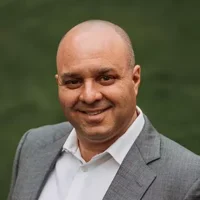Keeping patients loyal to your practice or medical facility often is a challenge. As the insurance industry has changed with patients now taking on more share of the cost of healthcare, price is a factor that has transformed patients into customers that are willing to switch providers for the right price.
But the one way you can improve patient loyalty for your practice is through patient progress tracking. Here’s how:
1. Leverage Technology
Technology can be used to strengthen the patient-clinician relationship, which works to drive loyalty. Thus, it’s essential to use technology that encourages engagement and provides convenience. For example, work with healthcare app developers to create an app for your business where the patient can easily send you questions and request appointments. This will show the patient that you’re keeping up to date with the latest technology to make their lives easier.
It’s also facilitating telehealth and telemedicine. For example, you can use patient engagement software to track patient progress and prescribe health programs. Instead of requiring patients to come into your office to receive guidance for an exercise program, you can prescribe exercise programs to your patients via their smartphone using technology using the software engagement platform.
This helps strengthen your relationship with your patient by enabling them to get the services they need without leaving their home. They’re also able to maintain their relationship with your medical practice since they’ll be able to connect to you via the platform without the need to come to your location.
2. Improve Visibility and Reputation of Practice
It’s imperative to ensure that your practice is visible online so that your patients can find you. By having online visibility, patients can get an understanding of the services you offer and why they should go to your location. Also, having visibility online provides a place for patients to read existing patients comments and reviews about your services and ensure the quality of medical care they can anticipate to receive.
But without having an online presence, you leave it up to patients to have the conversation on platforms you may not be aware of or aren’t able to contribute to. To improve visibility, it’s vital to use online directories, such as Google My Business and Yelp, and to ensure you have your business name, address, and details correct.
Additionally, managing your online reputation is vital as it can impact whether or not a patient chooses to work with your practice or come back for more services. A 2017 study by market research firm Bright Local indicated that 50 percent of consumers have doubts about a business after they read a negative review.
The study also revealed that 73 percent of people trust businesses more if they read a positive review. Thus, it’s vital to take action to address both types of reviews. For example, you can use best practices and respond to negative reviews by apologizing for the inconvenience. Also, ask the patient to carry the conversation offline and contact you with the details so you can solve the issue.
3. Improve Your Bottom Line
You can improve your bottom line profits with the help of patient progress tracking. But it requires patients adhering to their physical therapy programs. Patients who adhere to their physical therapy programs are more likely to improve their condition faster than those who do not.
Patients also have to get better and, ultimately, keep their appointments. To achieve this you can use a built-in notification system built into an app that sends out text alerts or email notifications to confirm patient appointments. This helps to increase engagement.
You can also create your own applications to provide patients with these convenient features.
4. Get Social
Social media is increasingly becoming a channel that healthcare providers are taking advantage to communicate with their patients. A Pricewaterhouse Coopers (PwC) report of more than 1,000 consumers based in the United States revealed that 42 percent were influenced by social media when making decisions on selecting a physician, hospital or medical facility.
Thus, it’s important to use social media as a way to communicate with your patients and drive engagement. One way to do this is by listing your service location, hours and other vital information online via social media platforms, such as Facebook or Instagram.
Use it as a place to answer general customer questions. Also, you can use it as a place for patients to start engaging conversations. For example, you can provide valuable health-related tips and trivia that your patients can use to improve their lives.
5. Take Advantage of User Generated Content
User Generated Content (UGC) can play an important role in improving loyalty among patients. Research shows that 92 percent of people heed the advice and recommendations of people they know. Thus, UGC it’s important to take advantage of UGC to encourage engagement.
To get this done, you can encourage patients to take part in a contest or giveaway that ask for them to share their experience with your medical practice. By taking these steps, you help facilitate a community and increase engagement among patients, which works to increase their loyalty to your medical practice.
Rahul Varshneya is the co-founder of Arkenea, healthcare app developers that help healthcare entrepreneurs and businesses build experience-rich mobile and web apps, and ResumeSeed. Rahul has been featured as a business technology thought leader in numerous media channels such as Bloomberg TV, Forbes, HuffPost, Inc, among others.
Thank you, Rahul Varshneya, for a guest post this week on Hybrid Chart blog. It’s an honor to partner with a professional such as yourself.








